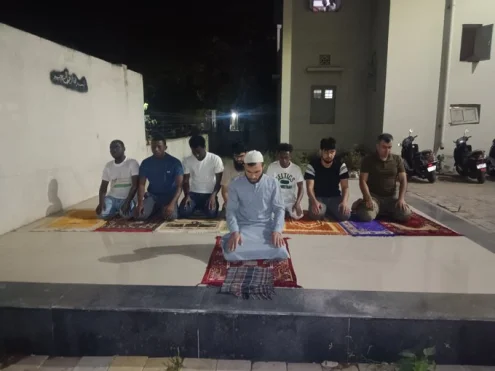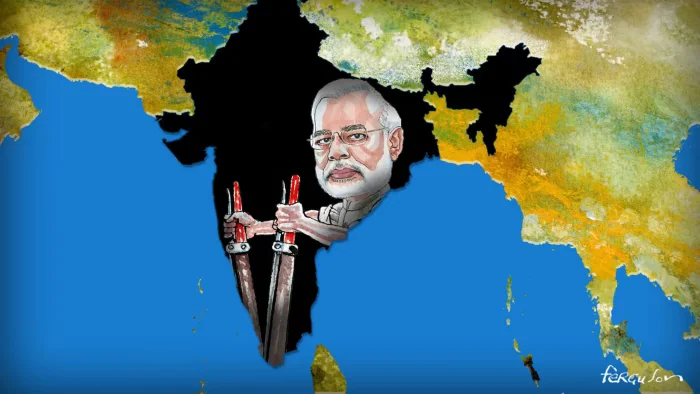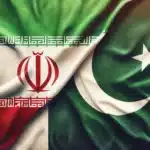India’s challenges are multi-faceted: The world’s largest democracy, is facing a multi-headed monster threatening its stability and global image. Let’s dissect the three main India’s challenges:
- The Great Divide: Richer than Ever, More Unequal than Ever
A recent report by the World Inequality Lab exposes a harsh reality – India’s wealth gap is wider than ever. The top 1%, the elite club, now gobbles up a staggering 40.1% of the nation’s wealth. That’s even higher than countries known for inequality like South Africa, Brazil, and even the United States! This elite group is living large, while the bottom 50% struggles with a shrinking share of just 13%. Billionaires like Mukesh Ambani live like kings, while millions struggle to put food on the table. Critics blame economic policies that favor the wealthy for this ever-widening chasm. Some suggest a ‘super tax’ on the richest to fund programs for the poor, but will the government listen?
- When Minorities Become Targets: Rising Tensions and Hate Crimes
India is witnessing a disturbing rise in anti-Muslim rhetoric and violence. Recently, international students offering Ramadan prayers at a Gujarat university hostel were attacked by radical Hindu nationalists. This incident is just one example of the dangers faced by minorities in India. The attackers showed no restraint, leaving their victims traumatized. This rise in intolerance and hate crimes is a major cause for concern, threatening the country’s social fabric. Minority rights are increasingly under attack, with discriminatory laws and policies popping up like weeds.

- Spies, Lies, and International Outrage: India’s Alleged Dirty Tricks
Adding fuel to the fire are allegations of India’s covert operations abroad, resulting in killings. India’s defense minister himself confirmed these operations in a televised interview when he ignited tensions by declaring, “If they run away to Pakistan, we will enter Pakistan to kill them,” referring to suspected terrorists.
Pakistan Condemns “Provocative” Actions
Pakistan swiftly denounced Singh’s remarks, calling them “provocative.” Foreign Office spokesperson Mumtaz Zahra Baloch emphasized Pakistan’s commitment to sovereignty and demanded international action: “India’s assertion of its preparedness to extra-judicially execute more civilians… constitutes a clear admission of culpability.”
Baloch further highlighted Pakistan’s evidence of “extrajudicial killings and transnational assassinations” committed by India’s Research and Analysis Wing (RAW) agency since 2020. She pointed to Pakistan’s strong response to past “Indian aggression” and accused India of using “hateful rhetoric for electoral gains.”
The Guardian Report Fuels the Fire
Pakistan’s outrage is fueled by a recent investigative report in The Guardian, which exposed the alleged killing of at least 20 individuals in Pakistan since 2020, linked to RAW. These claims, backed by intelligence officials and Pakistani investigators, paint a picture of a widespread network of extrajudicial killings.
As cited by The Guardian, Indian intelligence officers state shift to targeting dissidents abroad followed the Pulwama attack in 2019. India looked to agencies like Mossad and KGB [Komitet Gosudarstvennoy Bezopasnosti], known for extrajudicial killings. Inspiration drawn post-Khashoggi case, suggesting ‘why not us?’
Calls for Accountability and Accusations of Broken Laws
Pakistan’s Foreign Office portrays these actions as a “global phenomenon” that violates international law and the United Nations Charter. They reference a press conference by Foreign Secretary Syrus Sajjad Qazi, where “credible evidence” linked Indian agents to the assassination of two Pakistani nationals in Sialkot and Rawalakot.
“These cases exposed the increasing sophistication and brazenness of Indian-sponsored terrorist acts inside Pakistan, with striking similarities to the pattern observed in other countries, including Canada and the United States,” the Foreign Office said.
The Pakistan FO concludes by demanding that “India must be held accountable internationally for its blatant violation of international law.”
Such actions further tarnish India’s international reputation and heighten tensions within the country. These accusations come at a terrible time, when India is already facing global scrutiny over its treatment of minorities and economic inequalities.
India’s Challenges and the Looming Shadow of Hindu Nationalism and India’s Future
The rise of Hindu nationalism in India casts a long shadow over the country’s future. It presents a formidable challenge to India’s democratic ideals and its aspirations to be a global leader. While the current leadership likely reflects the national mood, upcoming elections may not significantly alter the trajectory of Hindu nationalism. Intolerance, once unleashed, is notoriously difficult to rein in.
Also Read: The Rise of Hindutva Fascism and the Indian Muslims
From Secular India to Ram Rajiya
India’s journey from a newly independent nation in 1947 to a country striving for a “Ram Rajya” – a mythical ideal kingdom ruled by Lord Rama, a Hindu deity associated with righteous rule – is a complex one. While the concept of Ram Rajya embodies ideals of peace, prosperity, and justice, the current political climate raises concerns about its interpretation and implementation.
Can India achieve a version of Ram Rajya that upholds the secular principles enshrined in its constitution and ensures equal rights for all its citizens? This seems highly unlikely under a nationalistic government promoting a single religion.
Also Read: India – From Republic to Ram Rajya
The Mahabharata, the epic tale of duty and righteousness, offers a cautionary tale. The Kauravas, blinded by their sense of entitlement and disregard for dharma (righteous conduct), ultimately faced destruction. A Ram Rajya, focused on the dominance of one religion over others, would be a recipe for instability, mirroring the disastrous consequences of the Kauravas’ actions.
![A manuscript illustration of the Battle of Kurukshetra, fought between the Kauravas and the Pandavas, recorded in the Mahabharata Epic [Google Images].](https://southasiatimes.org/wp-content/uploads/2024/04/Kurukshetra.webp)
Moreover, as some proponents of Hindu nationalism advocate for an “Akhand Bharat” (Undivided India), a concept that loosely references the geographical boundaries described in the Mahabharata epic, it’s crucial to understand the Mahabharata as a complex literary work, not a historical map. The concept of Akhand Bharat is more symbolic than literal, representing a cultural sphere of influence rather than a political claim. Furthermore, the vast empires described in the epic encompassed diverse populations with varying religious beliefs. Using the Mahabharata to justify territorial claims on neighboring countries with distinct histories and ethnicities is a dangerous misinterpretation.
India must learn from its past and strive for a state that is inclusive and respects the diversity of its people.
Your go-to editorial hub for policy perspectives and informed analysis on pressing regional and global issues.







Add a Comment